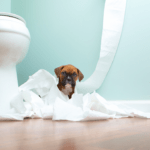Table of Contents
Clicker training for pets is a popular and effective method for teaching new behaviors and reinforcing good habits. It relies on positive reinforcement, making training a rewarding experience for your pet. Whether you’re training a dog, cat, or even a bird, clicker training can help you achieve impressive results. Here are 10 powerful techniques to get started with clicker training for pets.

1. Understanding Clicker Training for Pets
Clicker training involves using a small, handheld device that makes a clicking sound to mark the desired behavior. When your pet performs the correct behavior, you click the device and immediately follow with a treat. This helps your pet associate the click with a reward, reinforcing the behavior. For more on the basics of clicker training, visit PetMD Clicker Training.
2. Choosing the Right Clicker
Clickers come in various shapes and sizes. Choose a clicker that fits comfortably in your hand and produces a clear, distinct sound. Some clickers have volume control, which can be helpful for pets sensitive to loud noises. For a selection of recommended clickers, see The Spruce Pets Best Dog Clickers.
3. Timing Your Click
Timing is crucial in clicker training. Click at the exact moment your pet performs the desired behavior to ensure they understand what they’re being rewarded for. A delayed click can confuse your pet and hinder training progress. For timing tips, visit AKC Clicker Training Timing.
4. Starting with Simple Commands
Begin with simple commands like “sit,” “stay,” or “come.” Use the clicker to mark the behavior as soon as your pet performs it, followed by a treat. Gradually increase the complexity of commands as your pet becomes more comfortable with the training process. For a list of beginner commands, see ASPCA Clicker Training.
5. Consistency is Key
Consistency is vital for successful clicker training. Use the same command words and clicking techniques each time you train. Consistent practice helps your pet learn faster and reinforces good behavior. For tips on maintaining consistency, visit PetSafe Consistency in Training.
6. Gradual Progression
Gradually increase the difficulty of training sessions by introducing new commands and environments. Start training in a quiet, distraction-free area and slowly move to more challenging settings. This helps your pet generalize the behavior to different situations. For progression strategies, see AKC Training Tips.
7. Using High-Value Treats
Choose high-value treats that your pet loves to motivate them during training. Small, soft treats work best, as they can be quickly consumed without interrupting the training session. For treat recommendations, visit PetMD Best Training Treats.
8. Incorporating Play and Fun
Make training sessions enjoyable by incorporating play and fun activities. Use toys and games to reward good behavior, keeping your pet engaged and excited about training. For ideas on making training fun, see ASPCA Enrichment Toys for Dogs.
9. Avoiding Common Mistakes
Avoid common mistakes such as using the clicker as a remote control, clicking without following up with a treat, or using the clicker to get your pet’s attention. These can confuse your pet and slow down the training process. For a list of common mistakes to avoid, visit The Spruce Pets Clicker Training Dos and Don’ts.
10. Patience and Positive Reinforcement
Patience and positive reinforcement are key to successful clicker training. Always reward good behavior and avoid punishment. Celebrate small successes and be patient with your pet’s learning process. For more on positive reinforcement, see PetMD Positive Reinforcement Training.
Additional Resources for Clicker Training for Pets
For more detailed guides and support, check out these trusted resources:
Clicker training for pets is a rewarding way to teach new behaviors and strengthen your bond. With consistency, patience, and the right techniques, you can achieve remarkable results. For more resources on pet training and care, visit our Pet Training section.
FAQs
What is clicker training for pets?
Clicker training is a positive reinforcement training method using a clicker device to mark desired behaviors, followed by a reward to reinforce those behaviors.
How do I start clicker training with my pet?
Begin with simple commands like “sit” or “stay,” using the clicker to mark the behavior and immediately following with a treat. Consistency and patience are key.
Can clicker training be used for all pets?
Yes, clicker training can be used for various pets, including dogs, cats, birds, and even small animals like rabbits.
What treats are best for clicker training?
Use small, high-value treats that your pet loves and can quickly consume. Soft treats work well to avoid interrupting the training session.
How long should clicker training sessions be?
Keep training sessions short, around 5-10 minutes, to maintain your pet’s interest and avoid fatigue.
Is clicker training effective for correcting bad behavior?
Clicker training is best for teaching new behaviors and reinforcing good habits. It is less effective for correcting established bad behaviors, which may require additional training methods.
Conclusion
Clicker training for pets is an effective and enjoyable way to teach your pet new behaviors and reinforce positive habits. By following these techniques and being consistent, you can create a strong, positive bond with your pet. Regular practice and patience will lead to impressive results, making training a rewarding experience for both you and your pet.
Get LIFETIME ACCESS to “My Private Prompt Library”: https://bit.ly/MTSPromptsLibrary
Looking for a custom GPT? or SEO services for your website? Hire me on Fiverr: https://bit.ly/Hire_me_as_a_Freelancer
============================================
Get LIFETIME ACCESS to “My Private Prompt Library”: https://bit.ly/MTSPromptsLibrary











